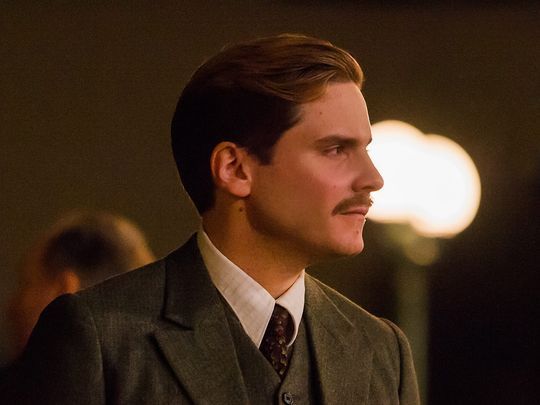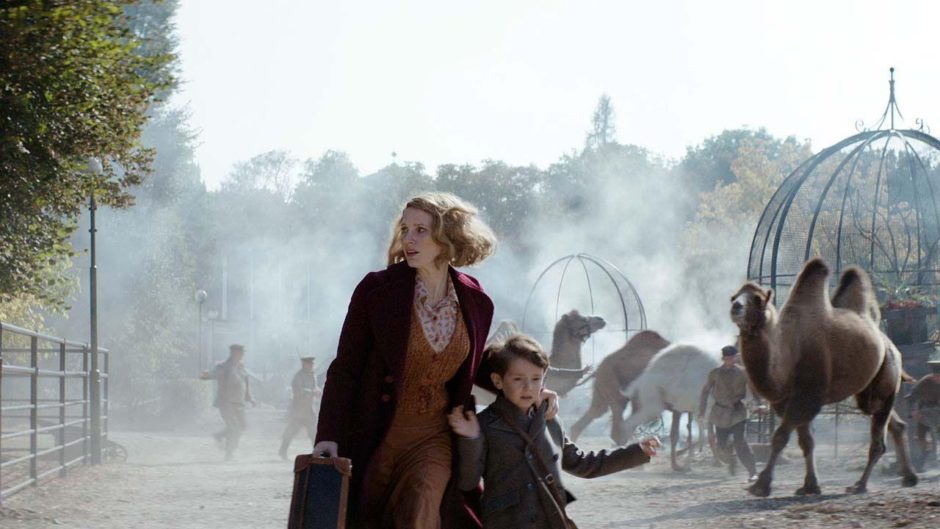Niki Caro’s The Zookeeper’s Wife, now available on the Netflix streaming network, is a film that will most likely please the current Polish government, which presents Poland as a model of resistance and a beacon of righteousness during the German occupation from 1939 to 1945.
Based on real-life events, it’s the inspirational story of a Polish couple who rescued about 300 Jews under the noses of the Nazis. Their courage and decency are remarkable in light of the less than noble behavior exhibited by some Poles toward Jews. This is a facet of the Nazi interregnum that Poland, under the leadership of the Law and Justice Party, would rather sweep under the rug.

Jan and Antonina Zabinski, the courageous Catholic couple who risked their lives to help Jews, acquired their status as righteous gentiles following the ghettoization of Warsaw’s Jewish population in 1940. Jan, the manger of the city’s zoo, took the initiative to help them. His wife was his willing assistant. The Zabinskis hid a succession of Jews in their villa on the grounds of the zoo and in animal enclosures they no longer needed after the bombardment of the zoo by German aircraft on the first day of World War II.
Released last year, this fine movie starts in the summer in 1939, when Poland and Germany were on a collision course. In one of the first scenes, Antonina (Jessica Chastain, in an understated but effective performance despite her inability to mimic a Polish accent in English) saves a baby elephant from suffocation. This establishes her as an animal lover. Jan (Johan Heldenbergh), her husband, is portrayed as a stolid, hard-working figure.
The war starts on September 1 with the roar of airplanes in the distance, a mood the film captures in ominous fashion. Very soon, the bombs fall, the animals react skittishly and Polish soldiers shoot an elephant.
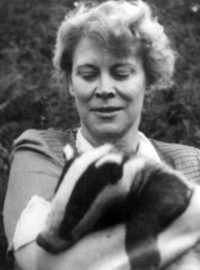
A zoologist serving with German forces in Warsaw, Lutz Heck (Daniel Bruhl), offers to rescue “the best of your breed” for safekeeping in Berlin. He assumes that the war will not last long and that Germany will be immune from Allied bombings. Buying into his premise, the Zabinskis accept his offer, as well as his proposition to breed bison in the zoo.
After the Jews of Warsaw are herded into a ghetto, Jan decides to lend a helping hand to Jews until they can be directed to safe houses. Having grown up in a Jewish neighborhood, he’s partial toward Jews. In one of his first acts of kindness, he brings back a traumatized young Jewish woman who was raped by two German soldiers guarding the gates of the ghetto. Antonina thrusts a rabbit into her hands, in the first step toward nursing her back to health. The therapeutic effect that animals can have on people is one of the themes of this low-key but morally assertive film.
Antonina’s relationship with Lutz Heck is another aspect it explores. Though a Nazi to the core, he loves animals, and this quality has a positive impression on her. At one point, they seem romantically involved, but she steps back from consummating their mutual attraction. When Jan questions her sharply about it, she claims she’s frightened by him and has no alternative but to be accommodating because he “owns us.”
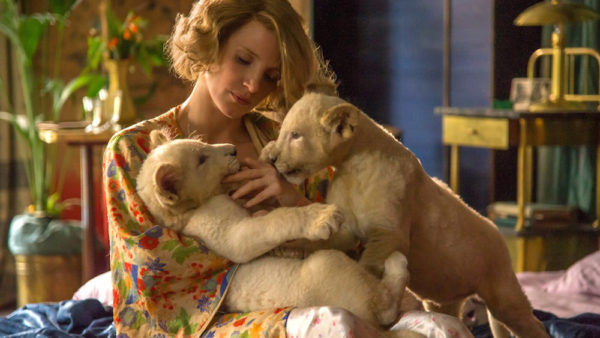
The movie charts the Holocaust directly and obliquely.
In the summer of 1942, the Germans begin deporting Jews en masse to extermination camps. This genocidal process is launched as Jews board a freight train. Jan, who has a special permit to enter and leave the ghetto at will, offers to help the prominent director of a Jewish orphanage, but he declines. Less than a year later, as the Jewish fighters in the ghetto stage a revolt, Antonina stands on a balcony and watches soot from burning buildings land on her shoulders.
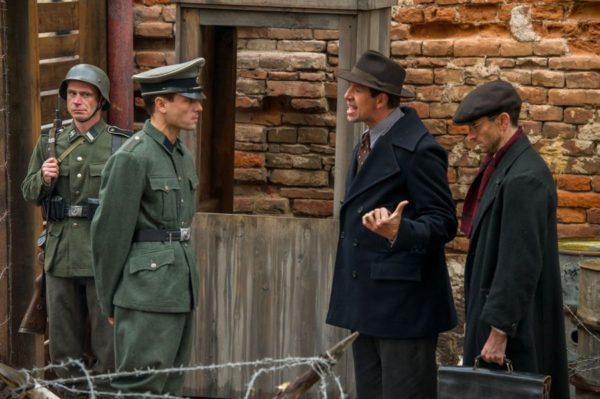
The 1944 general uprising in Warsaw is also written into the script. Jan, having joined the battle as a fighter, is wounded and disappears temporarily.
The Zookeeper’s Wife, which ends in the wake of the war, portrays the Zabinkis as down-to-earth patriotic Poles who passed the test of decency during one of Poland’s darkest hours. There are only good Poles in this movie.
